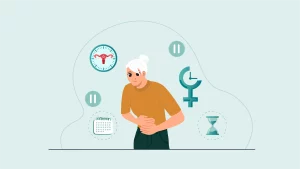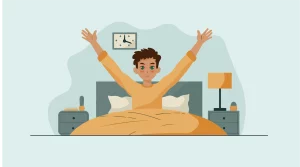Botox (botulinum toxin) is well-known for its use in cosmetic procedures, reducing wrinkles and treating medical conditions such as migraines and excessive sweating. However, one lesser-known side effect is its potential impact on eye health, particularly the development of dry eyes. In this article, we’ll explore how Botox injections can lead to dry eyes, blurry vision, eye pain, and other issues, as well as how you can manage or prevent these symptoms.
How Botox Affects the Eyes?
Botox, or botulinum toxin, works by temporarily blocking nerve signals to muscles, causing them to relax. This effect is commonly used to smooth out wrinkles, especially around the forehead and eyes. However, Botox can have unintended effects on the muscles controlling eyelid function and tear production, which can lead to several eye-related symptoms.
When Botox is injected near the eyes, particularly around the forehead or crow’s feet, it can affect the orbicularis oculi muscle, which is responsible for closing the eyelids. This disruption may lead to incomplete eyelid closure, leaving the eye more exposed to air and causing rapid tear evaporation. As a result, dry eye symptoms can develop, including irritation, discomfort, and blurry vision.
Additionally, Botox injections around the eyes may reduce tear production by affecting the lacrimal glands. This can lead to a lack of sufficient moisture on the eye’s surface, further contributing to dry eyes. These side effects, though typically temporary, can be uncomfortable and may require treatment.
Can botox cause problems with eyes?
Common Botox Eye Side Effects
Botox injections can cause several side effects related to the eyes. Some of the most common symptoms include:
- Dry eyes and irritation: One of the most frequently reported issues, which can result in a gritty or burning sensation.
- Blurry vision: Caused by a lack of sufficient tear coverage or due to Botox affecting the muscles that control eyelid function.
- Eye pain: Some patients experience eye pain or discomfort, which may worsen in dry environments or after prolonged screen time.
- Watery eyes: Interestingly, Botox can also cause the eyes to water excessively as the body compensates for dryness.
- Eye strain: This can occur if the eyes are not adequately lubricated, leading to discomfort, especially when reading or focusing on screens.
If any of these symptoms occur, it’s important to monitor them and seek medical advice if they persist.
Can Botox for Migraines Cause Dry Eyes?
Botox is also used as a treatment for chronic migraines, with injections administered in the forehead, temples, and neck areas. While this treatment can be effective for reducing the frequency and severity of migraines, it may also contribute to dry eye syndrome for the same reasons as cosmetic Botox injections.
In patients receiving Botox for migraines, dry eyes may occur if the injections affect the eyelid muscles or tear production. If you are receiving Botox for migraines and experience symptoms like irritation or blurry vision, it’s essential to discuss these concerns with your healthcare provider. They may adjust the dosage or technique to minimize these side effects.
Can Botox Around the Eyes Cause Dry Eyes?
When Botox is injected around the eyes, particularly in the crow’s feet area or the forehead, it can cause a number of issues related to dry eye syndrome. The eyelid muscles, which play a crucial role in spreading tears over the eye’s surface, may not function properly after Botox injections, leading to increased evaporation of tears and dryness.
Experienced injectors can take care to avoid over-relaxing the muscles around the eyes, helping reduce the risk of dry eyes. Additionally, using preservative-free artificial tears or ointments before and after the procedure can help alleviate symptoms.
Blurry Vision After Botox
Blurry vision is another common side effect reported by some Botox patients, particularly those who receive injections near the eyes. This blurry vision can occur due to two primary reasons:
- Incomplete eyelid closure: If Botox interferes with the eyelid muscles, the eyelids may not fully close during blinking. This can cause the tear film to break down, leading to blurred vision.
- Decreased tear production: If Botox affects the lacrimal glands, it may result in insufficient tear production, which leads to dryness and blurred vision.
Blurry vision is typically temporary and should resolve once the Botox effect wears off. However, for more severe cases, patients can use lubricating eye drops or ointments to relieve the discomfort in a short-term.
How long do dry eyes last after botox?
Can Botox Cause Permanent Dry Eyes?
Many patients worry whether Botox can cause permanent dry eyes. Fortunately, the effects of Botox on eye health are generally temporary. The botulinum toxin used in Botox wears off over time, usually within three to six months, which means any associated symptoms like dry eyes should gradually improve.
However, in rare cases, Botox injections may lead to long-lasting changes in eyelid function or tear production. If symptoms of dry eyes persist after the effects of Botox have worn off, it’s crucial to consult with a healthcare professional. Chronic dry eye can sometimes lead to more severe complications, including damage to the cornea, and may require additional treatments.
Managing Eye Pain and Irritation After Botox
Eye pain and irritation are common complaints following Botox injections, particularly if there is insufficient moisture on the eye’s surface. If you experience eye pain after Botox, you should first check if your eyelids are closing completely. If they aren’t, you may need to address the incomplete closure with blink retraining. You can also wear masks at night to prevent the air from drying out your eyes.
In some cases, patients may experience sensitivity to light or increased irritation. These symptoms can be managed by avoiding bright light and using sunglasses when outdoors. Keeping the eyes well-hydrated is important to relief from irritation.
How do you prevent dry eyes with botox?
Preventing Dry Eye and Eye Discomfort After Botox
If you’re concerned about developing dry eye syndrome after Botox, there are several preventive measures you can take:
- Hydrate your eyes: Use preservative-free artificial tears before and after your Botox treatment to help keep your eyes moist.
- Communicate with your injector: Inform your Botox provider about any history of dry eyes, contact lens wear, or eye surgeries, so they can adjust their technique to minimize the risk of complications.
- Avoid environmental triggers: Stay away from dry, windy, or air-conditioned environments that can exacerbate dry eyes.
- Use an air humidifier in the main rooms to maintain a good level of humidity to prevent dry eyes.
- Do blinking exercises to retrain your eyelids: close your eyes and count to 3, squeeze your eyelids and count to 3 and open your eyelids and count to 3. This exercise can be done 5 times in a row and several times a day (for tutorial, click here). This allows you to blink completely and spread the lacyrmal film, which helps to moisturise the eyes.
Can Botox Cause Eye Strain?
Eye strain can occur after Botox injections, especially if the eyelids do not fully close. This can lead to discomfort, particularly when focusing on tasks like reading or using a computer. Inadequate lubrication of the eye’s surface can cause the eyes to feel tired or strained, which may worsen with prolonged activity.
To prevent eye strain, take regular breaks from close-up tasks. For example, use the 20-20-20 rule. Every 20 minutes, look 20 feet away (about 6 metres) for 20 seconds. This will prevent your eyes from being overstretched and will help to limit eyestrain. If eye strain becomes persistent, consult with an eye care professional for further management.
Conclusion
Botox is a highly effective treatment for a variety of conditions, but its impact on eye health is something that should not be ignored. Dry eyes, blurry vision, eye pain can occur following Botox injections, particularly when they are performed around the eyes or forehead. By understanding the potential risks and taking steps to manage symptoms, you can ensure that your Botox treatment is both safe and effective.
If you experience persistent dry eye symptoms, blurry vision, or other eye-related issues after Botox, it’s crucial to seek professional advice. With proper care and attention, these side effects can often be managed or minimized.
If you want to treat dry eyes naturally, you can visit our news item ‘Natural Remedies For Dry Eyes’ by clicking here.




